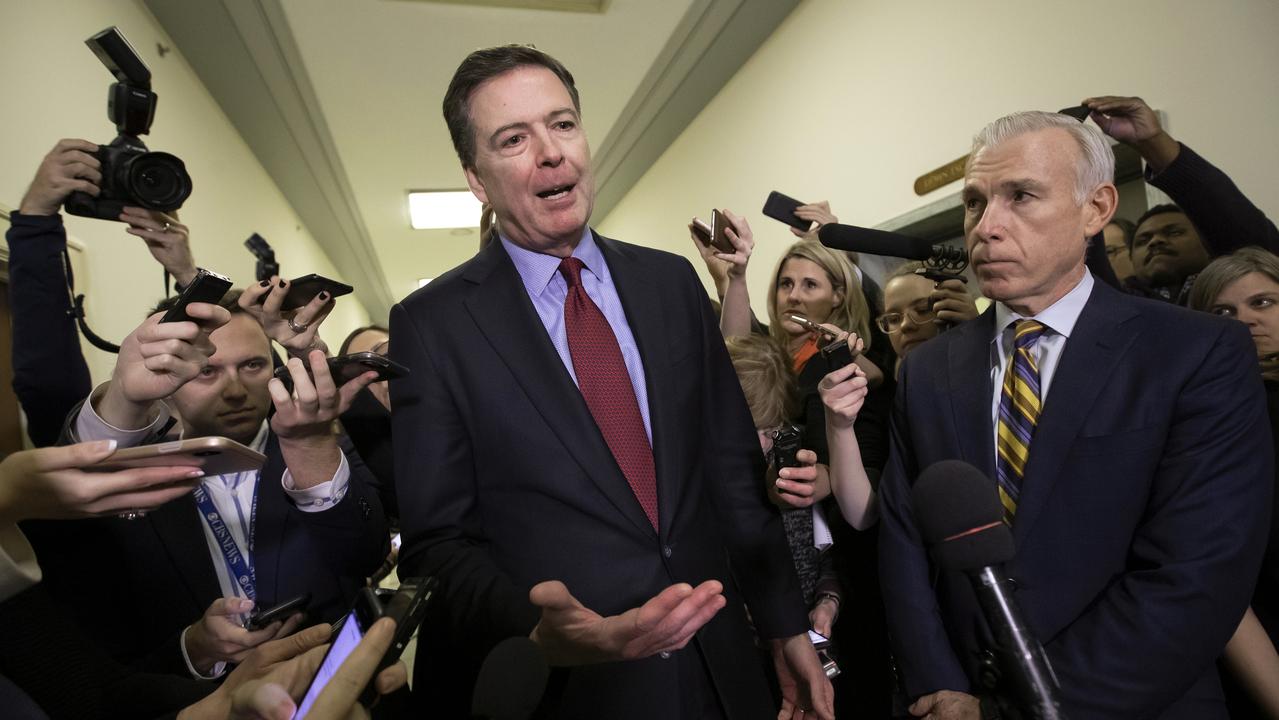Fingers in the honeypot
For many mums, full-time work won’t cover childcare costs.

In the Channel Islands just off the coast of Normandy in northwest France, the capital of Guernsey presents a colourful facade down to the waters of the port that has long sheltered trading ships and, later, corporations.
St Peter Port, which today has a population of more than 18,000, once sheltered the exiled French writer Victor Hugo, who finished his most famous work, Les Miserables, on the island. Hugo, whose masterpiece is ultimately the story of two people trying to find safe and affordable childcare, lived just a stroll away from what is now a four-storey office block that doubles as the “headquarters” of three entities that form part of a private equity group scoping out childcare centres around the world.
Partners Group, headquartered in Switzerland, bought the Australian outfit Guardian Early Learning Group for about $US440 million in 2016 and has since presided over an aggressive expansion schedule. The group owned about 71 centres then and now operates more than 100 services in six states and territories.
Less than two weeks ago, the Australian group wrote to parents advising them fees would be hiked to $120 a day (in at least one centre, this is a jump of $10 a day) and parents now would be slugged for a “child-free day” while staff took part in professional development.
The memo says: “It’s a real challenge for us to provide professional development opportunities for our educators during normal work hours.
“We do a fair amount of training after hours and on weekends, but this is often taxing on our educators and typically unpaid, voluntary time as the cost of paying overtime rates for out-of-hours training is prohibitive.”
Partners Group bought Guardian after the broad details of the Coalition’s childcare subsidy were announced in the federal government’s 2015 budget. The policy flagged an extra $3.5 billion in childcare assistance across four years — after delays, the policy begins on Sunday — and for many families it removes the cap on use entirely.
As one former childcare executive tells The Australian: “Well, the maths is pretty simple.
“If you put more money, billions more, on the table, providers are going to look at that and say, ‘Well, that’s more money that can come to us.’ So we are now in the middle of a battle for market share that will only intensify after July 1.”
Annual revenue in the sector is about $12bn and profit has hit $1bn even before the new childcare changes kick in. But even as taxpayer subsidies have increased from $3000 a child per year to $7500 in 2008 and now an uncapped system for families on household incomes below $186,000, affordability for parents has scarcely changed.
Early gains when subsidies are boosted are eaten away within two years. Parents, and taxpayers, are still billed for public holidays, when centres are closed. Education Minister Simon Birmingham wanted to end this fee-for-no-service arrangement but anger from providers proved stronger than the will to change.
Part of the new arrangement is the introduction of an hourly cap which, Birmingham says, will help keep a lid on price rises. Replacing the annual limits with hourly caps — up to 50 hours of care each week — has already prompted providers to tweak their service arrangements and save money.

The largest childcare provider in the country, Goodstart Early Learning, has created “flexible” nine and 10-hour care sessions for families to help them “make the most of their subsidy”. Goodstart says these options will be slightly cheaper than the flat 12-hour session on which a daily rate used to be charged.
The major provider, which has a market share of 8.3 per cent according to IbisWorld, says there will be some labour savings with the new structure but these will be “very slight”.
Melbourne mother Adele Barbaro, 35, says the price of childcare has reached a “tipping point” for her and many families. The centre where she sends two-year-old Harvey and Chloe, 11 months, has advised its fees are going up next week $7 a child per day.
“In my situation, I have my children in daycare four days a week and I work four days a week,” says Barbaro, who blogs as The Real Mumma on Facebook.
“If I was to increase to full-time hours and place my kids in care on the fifth day, I would lose money by going to work. I simply cannot afford to work full time.”
When she started using childcare in 2016 the daily fee was $124 a child. It is now $135 a day.
“The new increase was a real blow for us and since I expressed my family’s situation on my blog, I have had parents all over Australia contact me to express the impact it has had on them also,” she says. “Many are reassessing if it is worth continuing working while others are in the position where they simply cannot afford to go to work.”
G8 Education, which has a market capitalisation of $1bn on the Australian Securities Exchange and 6.8 per cent of the childcare service market, has issued a blanket fee increase of 5.5 per cent across its centres. Other centres have increased their prices by as much as 27 per cent and some have increased fees twice this year already.
Birmingham says: “Families will rightly be cynical of childcare providers trying to rip them off.

“As difficult as it can be to switch services, I’d encourage any families being ripped off to consider what alternatives may be available to them.”
One prominent sector source says she believes Birmingham has tried to “paint providers as the bad guy” so he can “wash his hands of more serious reform by saying he did his bit”.
The new childcare package, as he says, will leave most families better off by $1300 a year on average. But public policy is so often boiled down to winners and losers and, naturally, not everybody is a winner under the new system.
Alys Gagnon, executive director of The Parenthood, the nation’s largest independent family advocacy group, says families should not be put in the position of “choosing between the household budget and what is best for their child”.
“That is an awful position to put families in,” she says.
“There are two things the childcare system is designed to do. It is meant to provide quality, early education to children and it is designed to get parents back into the workforce.
“As it stands, this new system does the opposite of that for about 250,000 families because of the activity test and the cost of care. Parents have been feeling this affordability pressure for many, many years now.”
In the year to March 2009, just nine months after the then Labor government almost doubled the childcare rebate, fees spiked by 14.6 per cent. It is the biggest single jump in prices in childcare subsidy history. Rises have averaged 6.8 per cent a year across the past decade.
But as Australian National University Tax and Transfer Policy Institute director Robert Breunig says, taxpayer support is not the only — and certainly not the biggest — driver of childcare costs.
Breunig says the sector, similar to education and health, is “a high labour cost” industry, whatever happens. “Everything in our society that has a large labour input, we see the prices go up faster than inflation and other goods,” he says.
“There is quite a bit of regulation in childcare and a lot of it is quite arbitrary. The feedback I’ve seen is that centres are assessed on the kinds of activities they are doing with kids and the inspectors who do this often make incredibly arbitrary decisions.
“It is very costly for centres to comply with that regulation, even some of the smaller centres have two administrators just to cope with that burden.”
In the decade to 2019, the federal and state governments estimates the regulatory cost of the National Quality Framework — introduced in phases from 2012 — will add $1.6bn to the price of childcare, half of which would be borne by parents, 47 per cent by taxpayers and just 3 per cent by providers.
A former childcare executive, who did not wish to be named, says that because of the strict carer ratios and other regulations governing care, no childcare centre makes money on caring for babies. But they hope that baby will stay in the centre for years because that’s where the real money can be made.
“You have to do that because it is all about retention,” he says.
“You can do OK out of childcare, financially, but the people who make money are the landlords. The real money in childcare is in the long-term leases.”
This explains why property developer Meriton has opted to retain ownership of the centres it has built as part of its other projects. As billionaire Harry Triguboff told Fairfax Media in 2015: “You can make better returns from the childcare centres than you can from building houses because costs have gone up.”
ASX-listed property group Arena REIT has more than $500m of early learning properties in its asset portfolio and has reported conditions in the sector may improve after the start of the Coalition’s new childcare package, which will “provide funding of approximately $37bn to the sector over the next four years”.
These enormous overheads brought an explosion in the number of family daycare operators after the introduction of the NQF, destroying the reputation of a decades-old and often community-run system. So far, the rorts in that sector have cost taxpayers almost $2bn and Birmingham has had to move fast and often to shut loopholes and stop another $2.4bn in taxpayer funds walking out the door.
The Guardian Early Learning Group has now been owned by three private equity groups. The Malaysia-based Navis Capital had bought the group from Sydney-based Wolseley Private Equity.
Although the childcare sector is dominated by thousands of providers with fewer than 10 centres, and many individual services, there is evidence that consolidation is creeping back. When Eddie Groves’s ABC Learning empire collapsed in 2008, it had cornered about a quarter of the market. Those single monopoly days may be over and there are more serious big players now than ever.
In St Peter Port, where company tax is zero per cent for most businesses, private equity groups have become the masters of Tudor House, where many of their offices are based.
But as Les Miserables protagonist Jean Valjean knew, some of those offering the care of children are motivated by more than just civic duty.



To join the conversation, please log in. Don't have an account? Register
Join the conversation, you are commenting as Logout